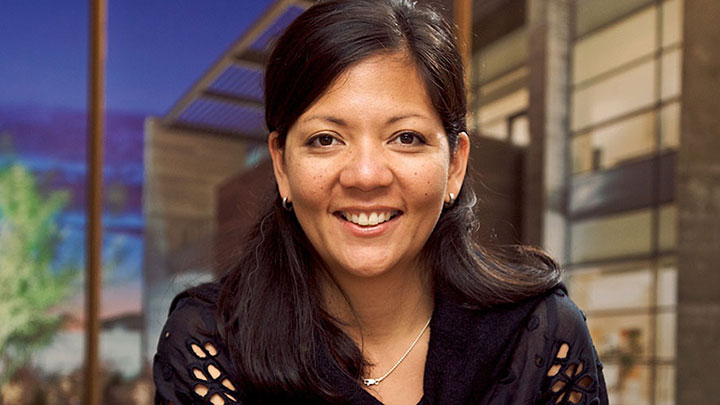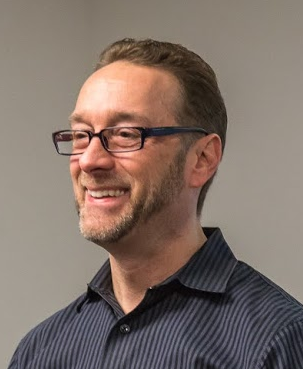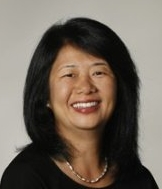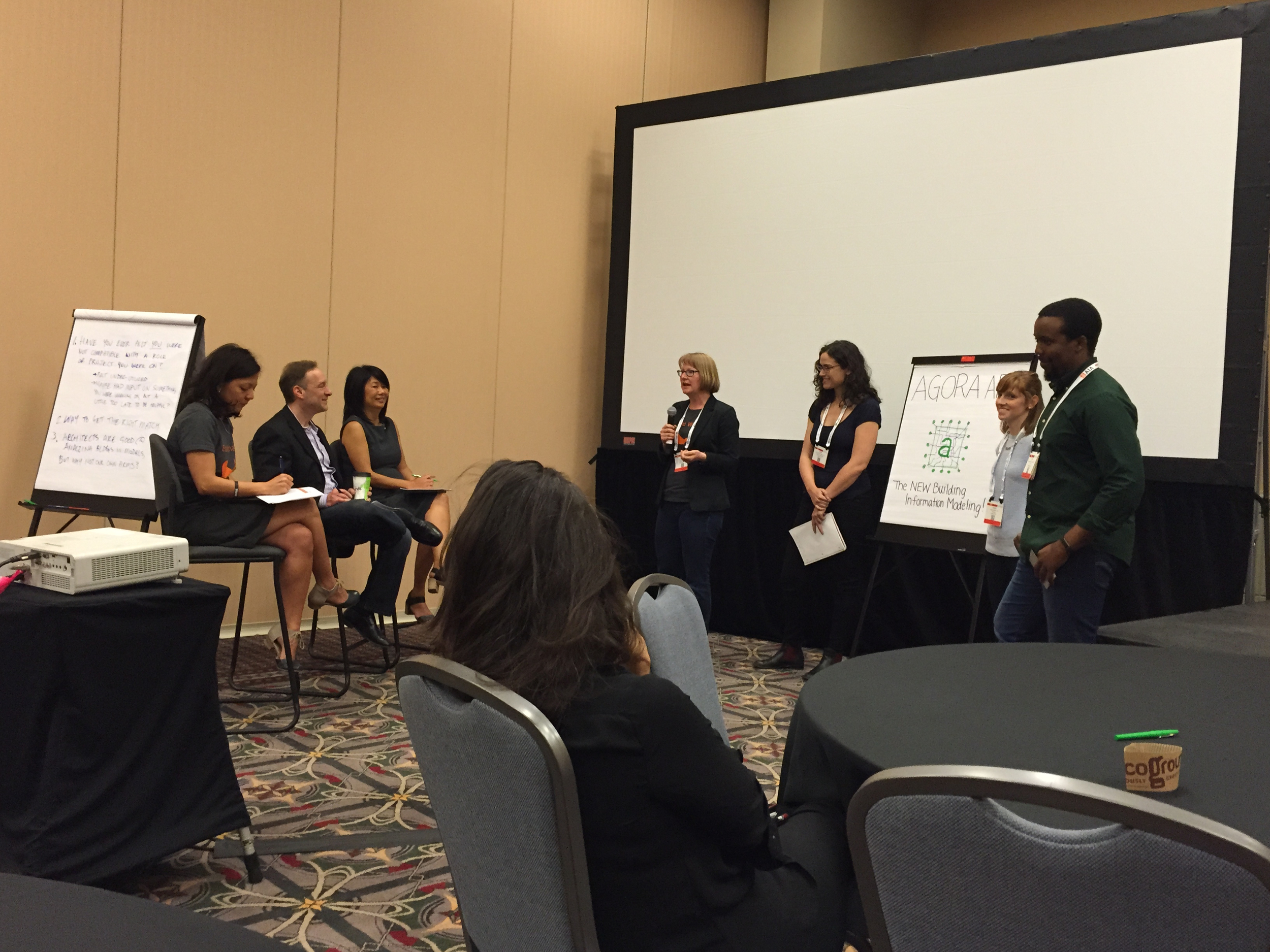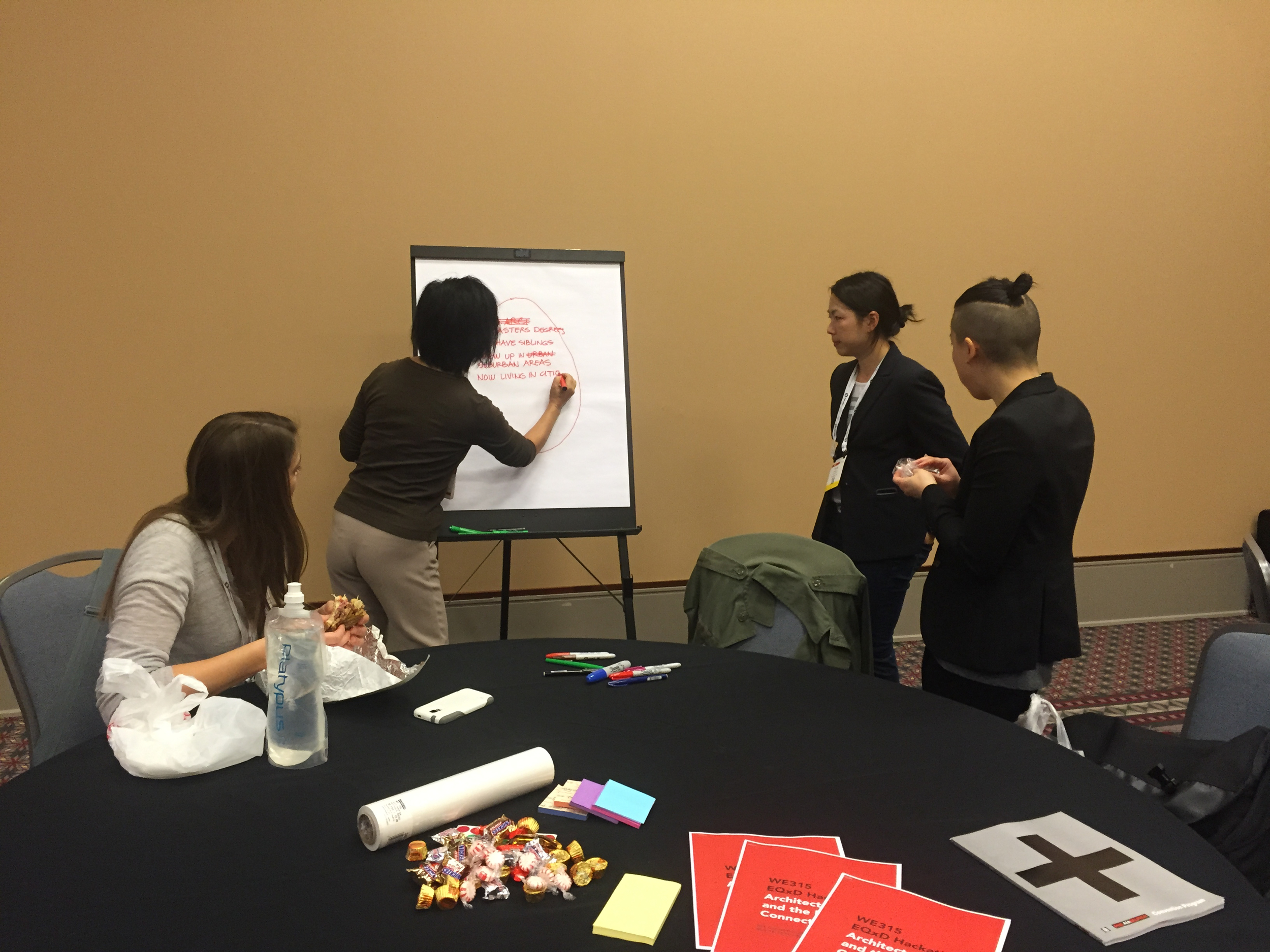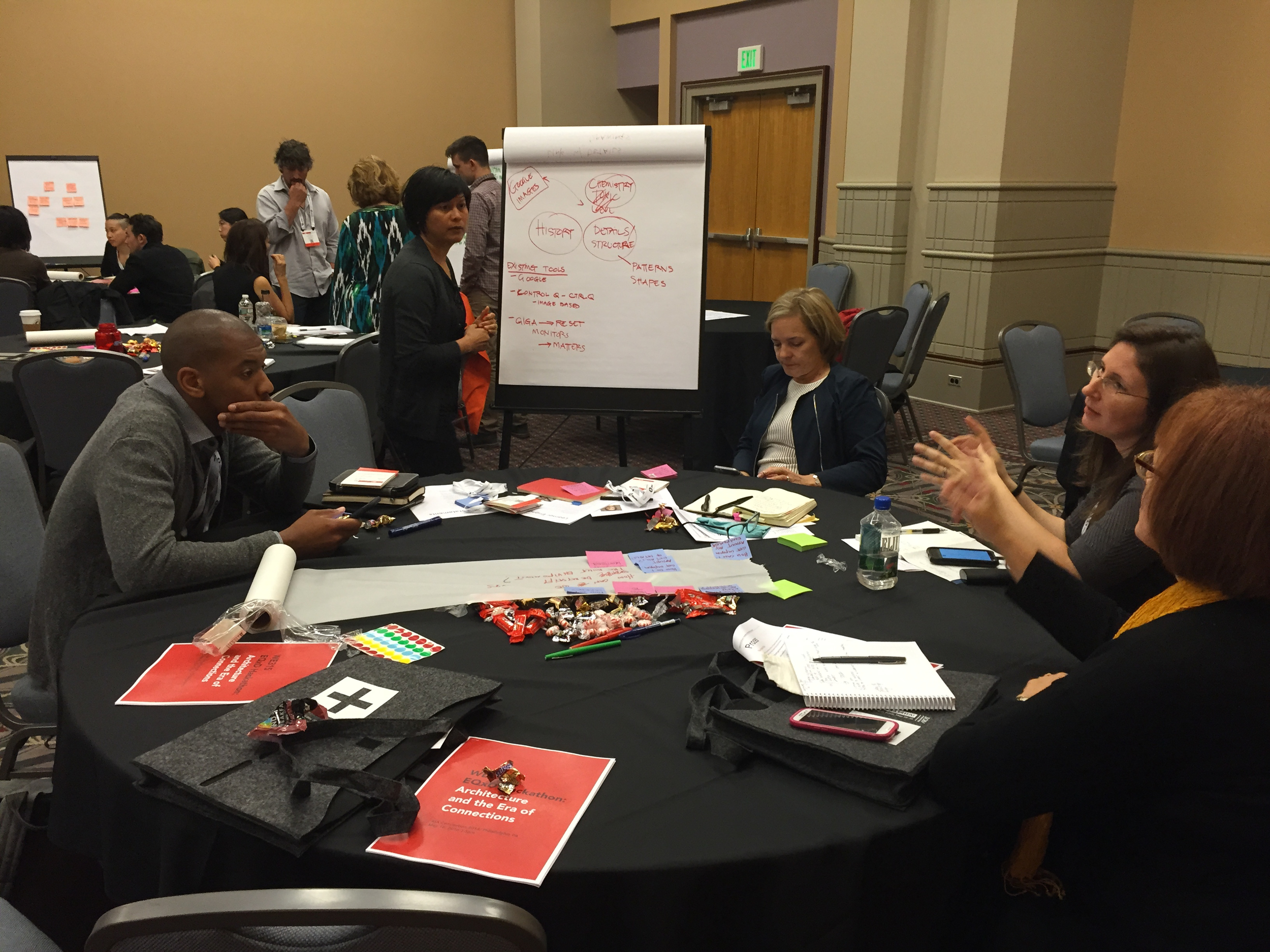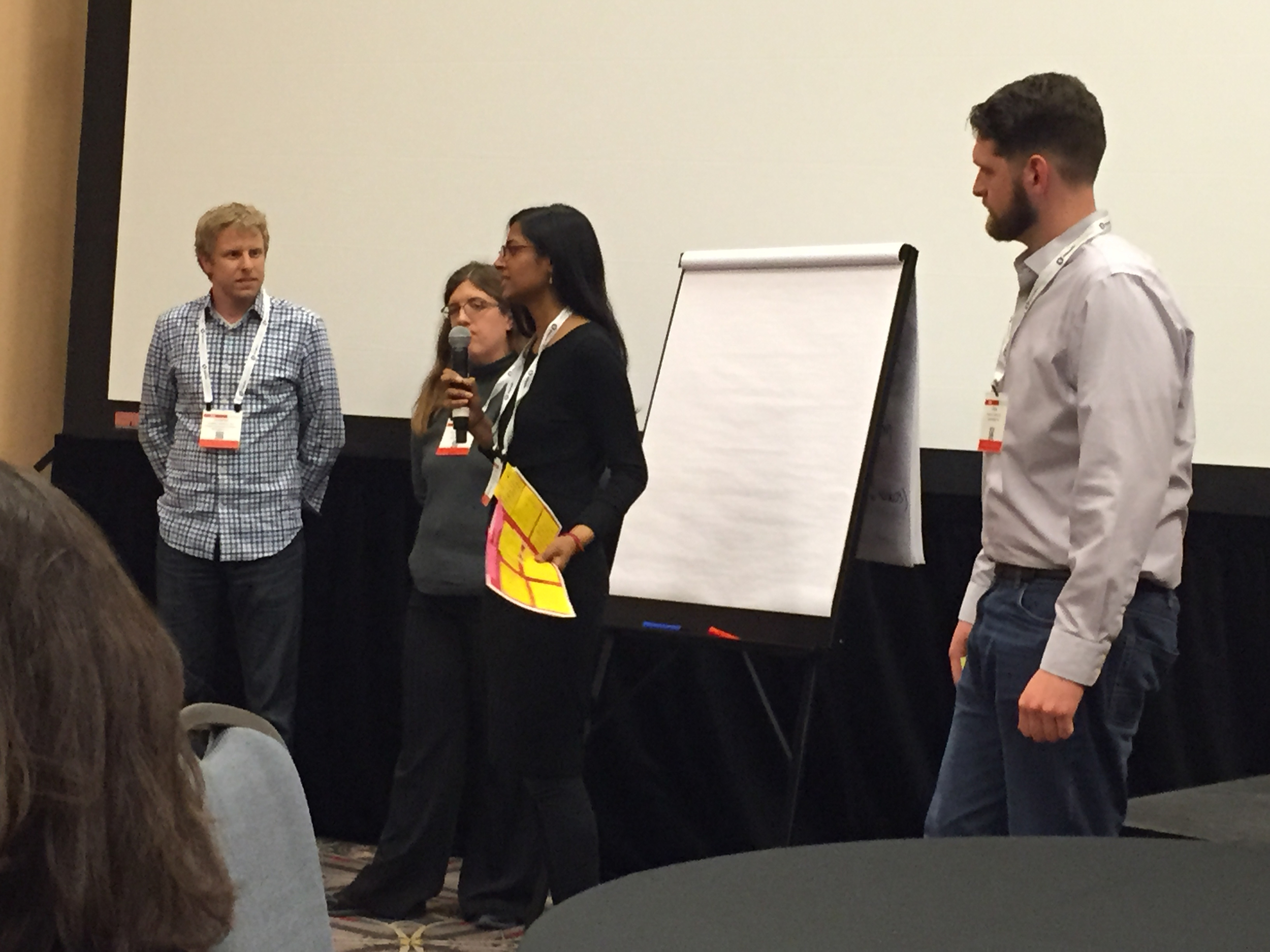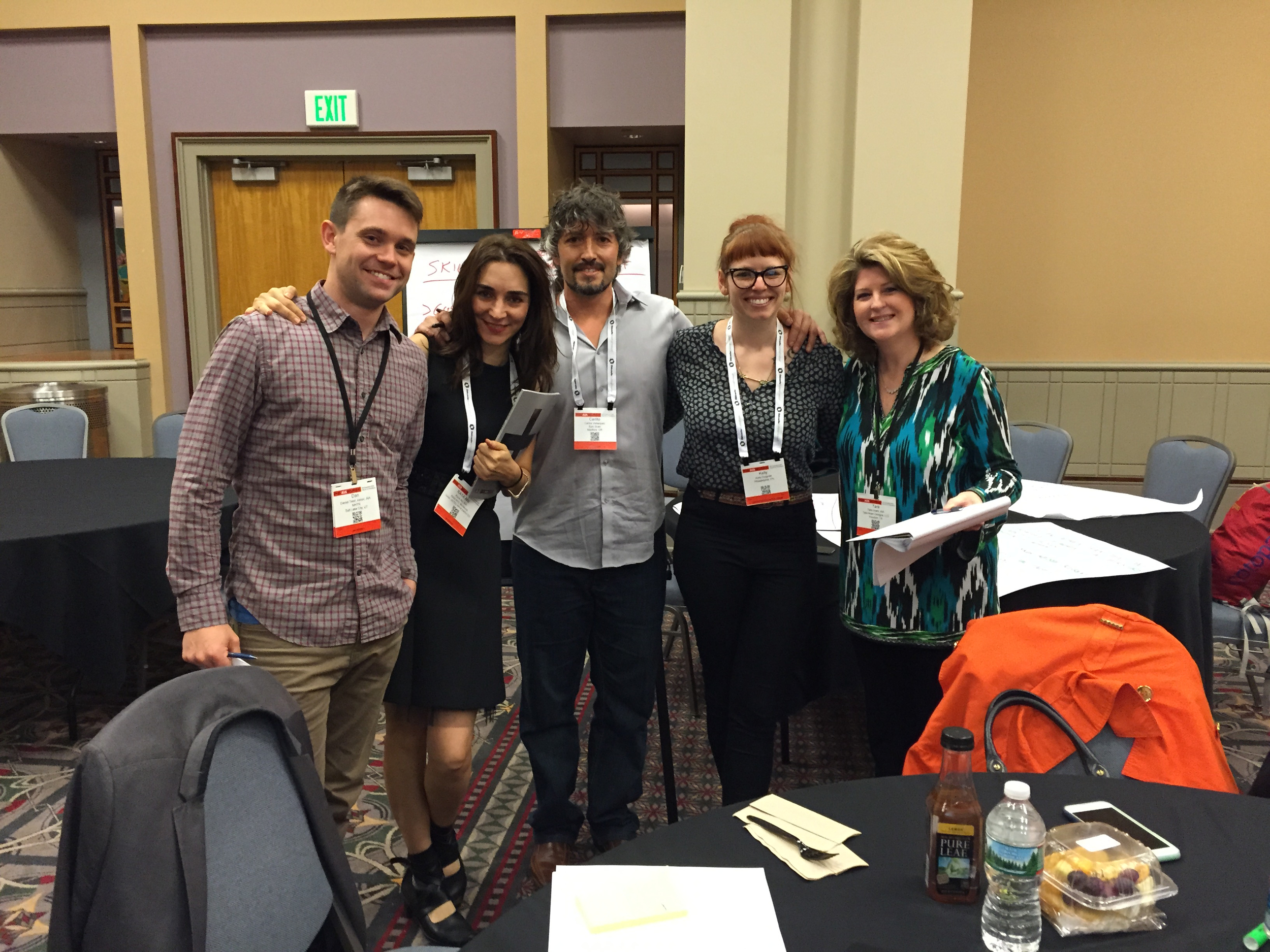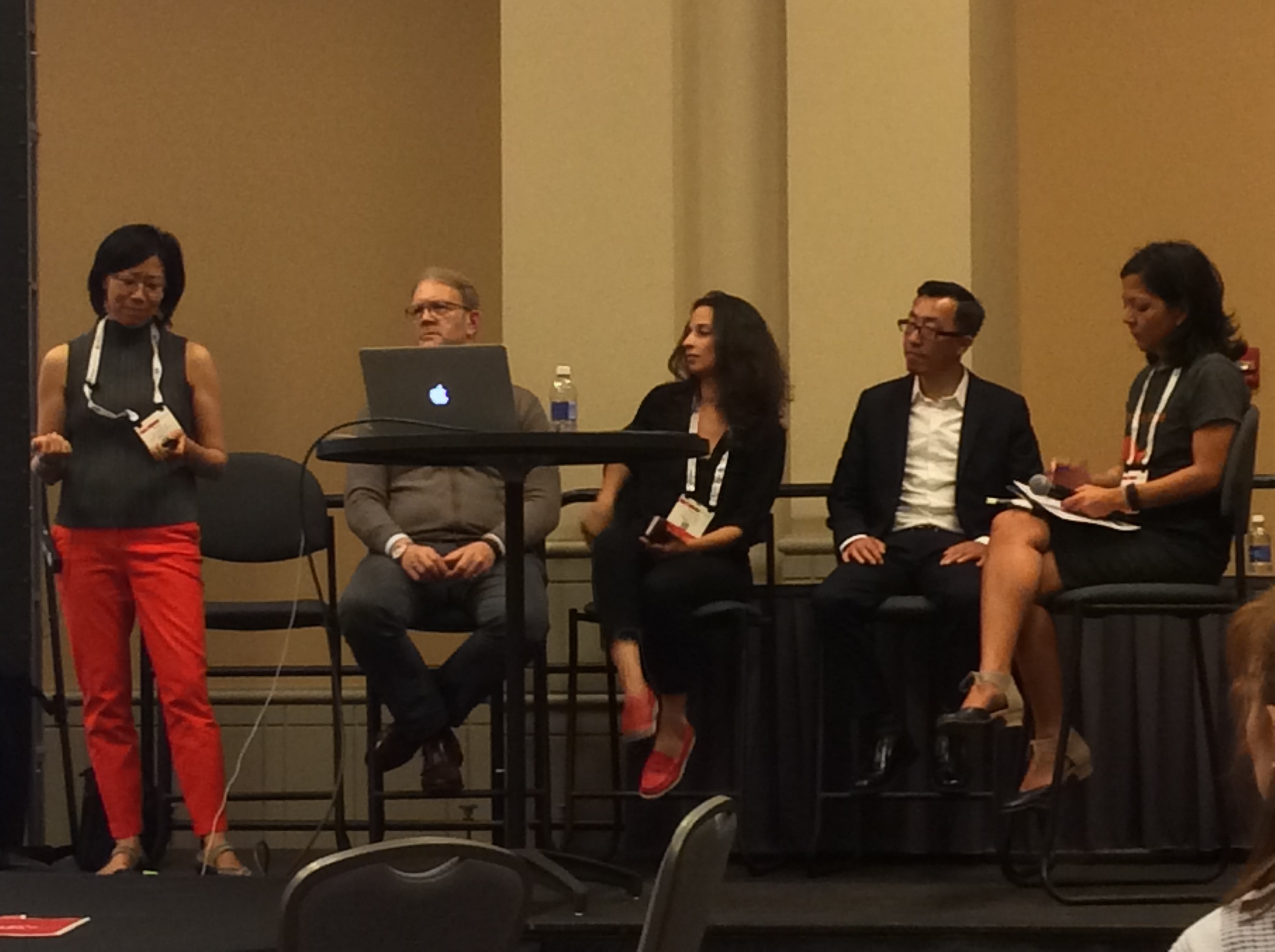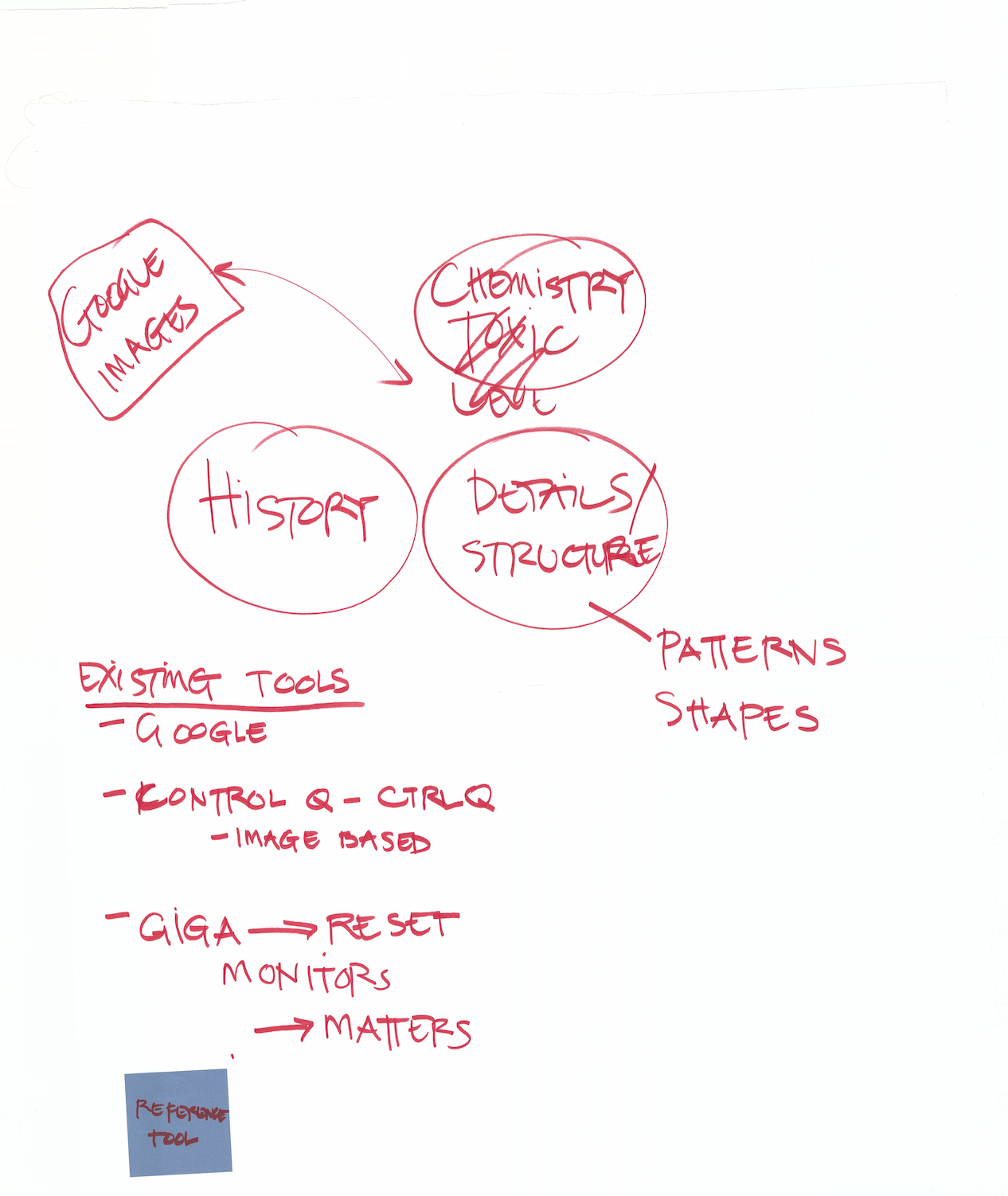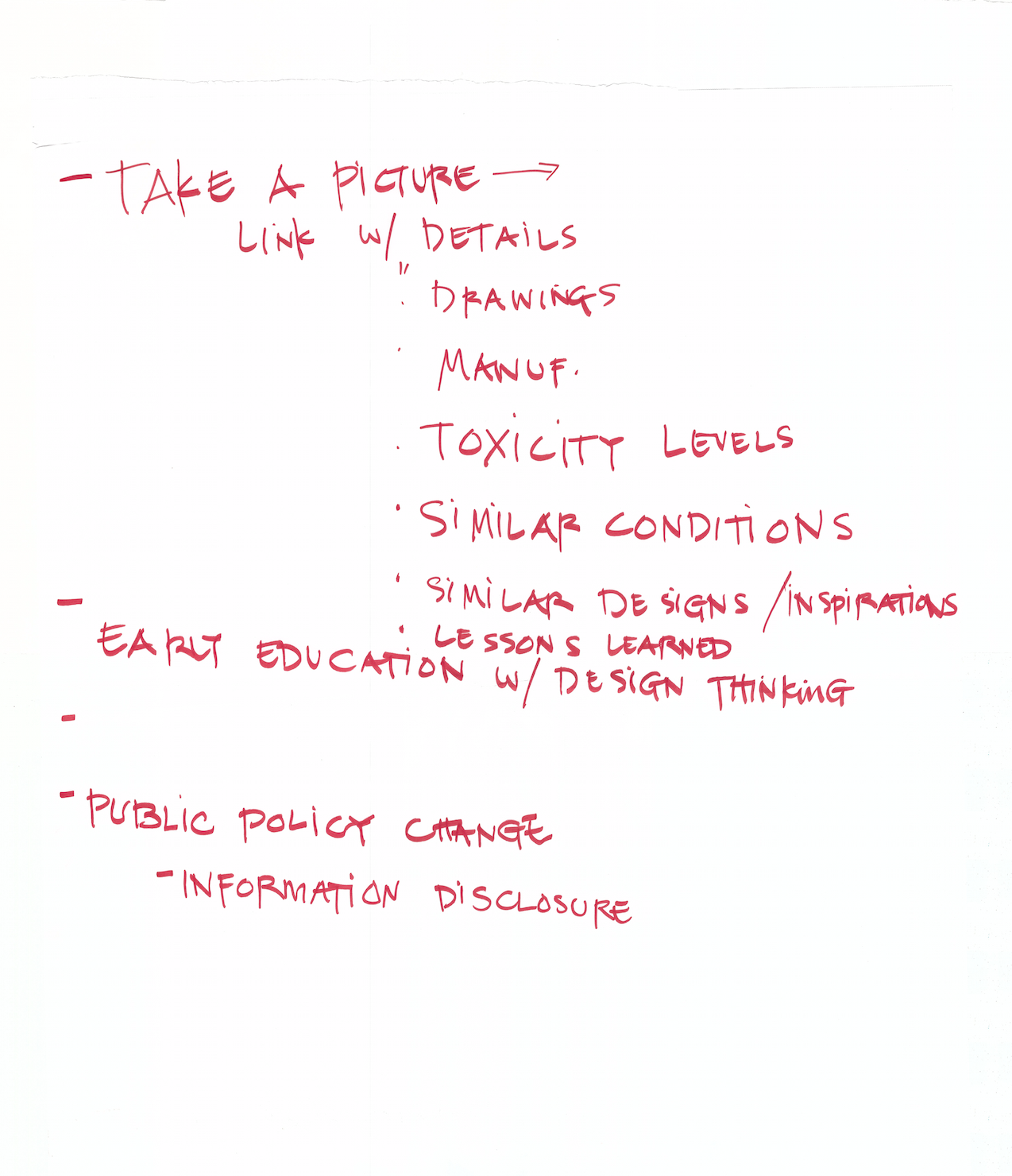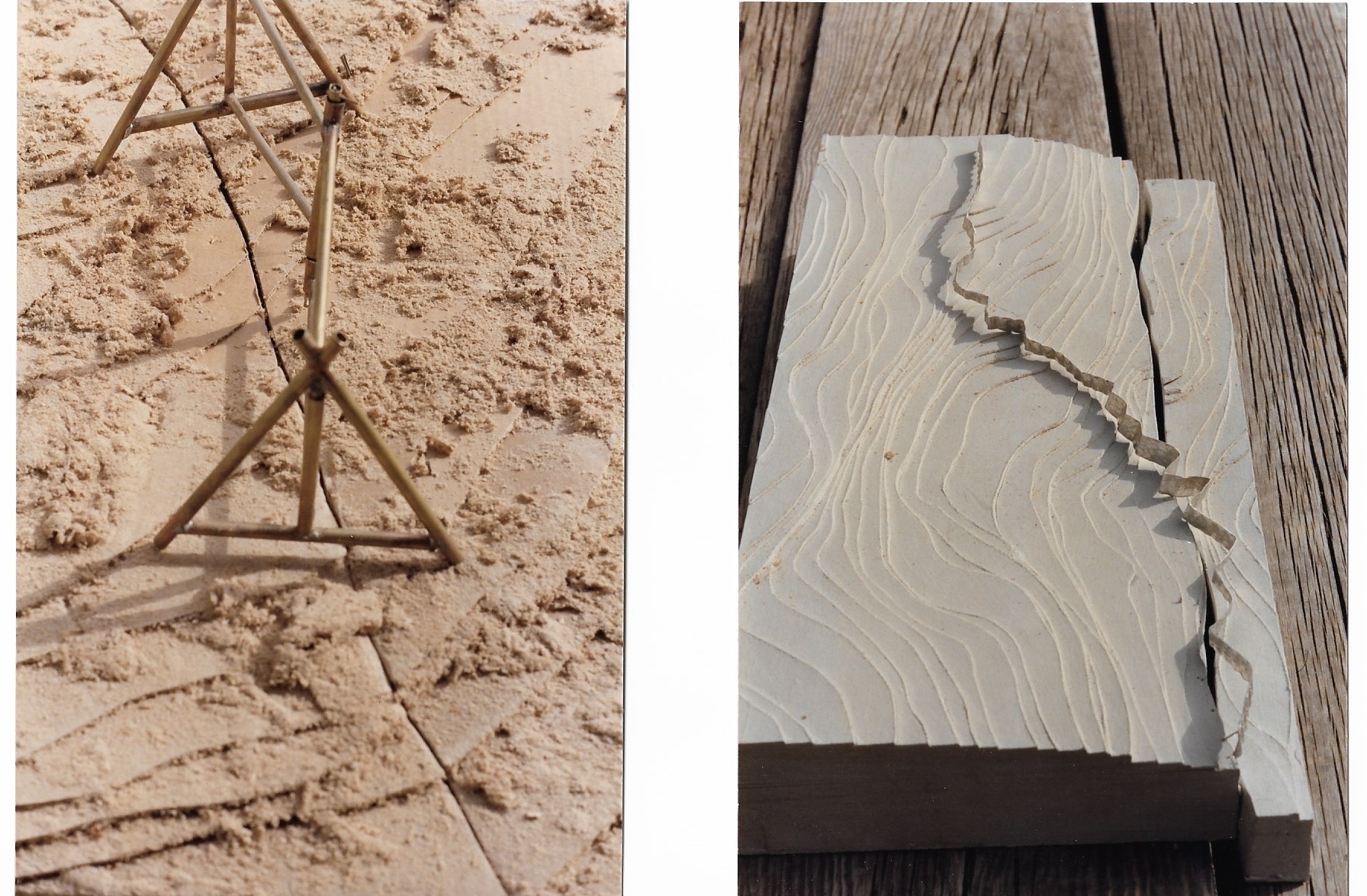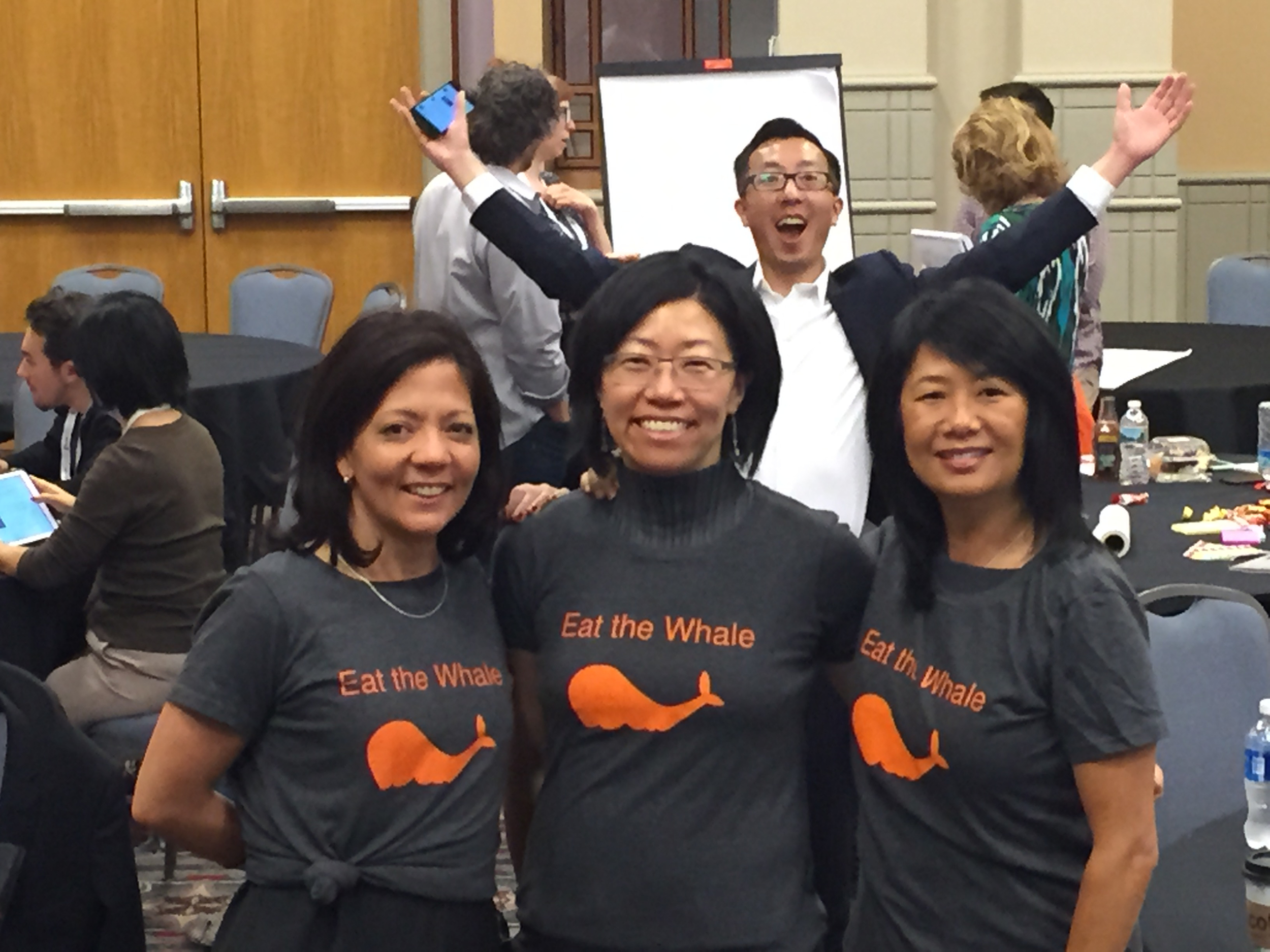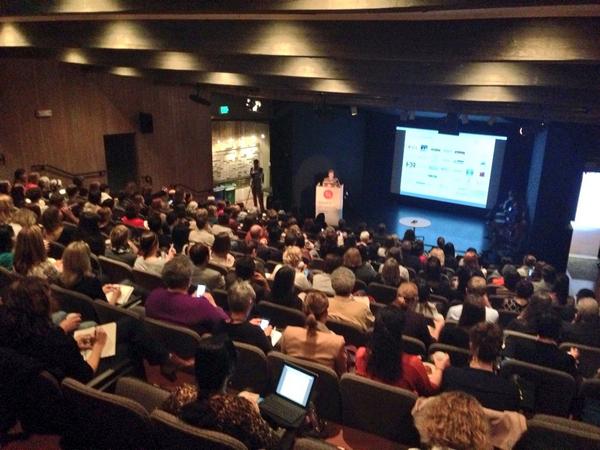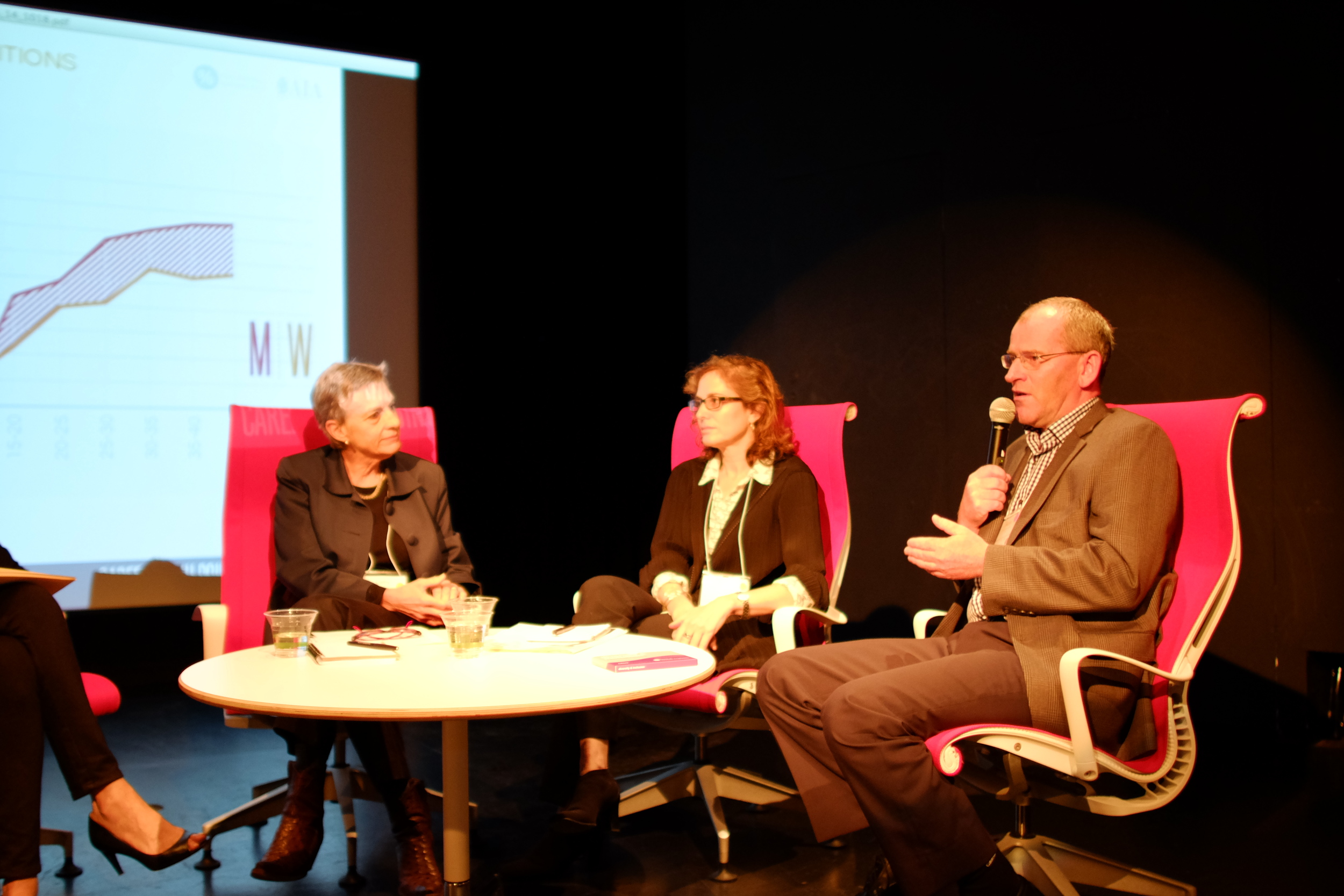An Interview by Lilian Asperin Clyman with Anthony Gold and Frances Choun
It always takes me a while to get over the post conference hangover. I attribute this to the introvert in me, the massive input of information jammed in my head, and the desire to sift through it all to find those few transformational insights that will shape how I think, what I understand and what I look forward to in the future – the “So What?”.
“I've probably attended close to 100 conferences over my career - in pretty much every role: attendee, demonstrator, panelist, organizer, sponsor, and keynote speaker - across several industries including tech, financial services, and healthcare. Rarely have I felt the combination of energy, passion, creativity, and optimism that I felt at the EQxD Hackathon event (workshop and award presentation - aka "happy hour"). Not only did the event bring together a diverse group of people with a common mission to positively impact the future of architectural practices, but it created instant bonds that I suspect will have far greater (and lasting) impact than imagined. It was an honor for me to present to this group, but an even greater joy to interact with so many wonderful people.”
-Anthony Gold, 2016 Equity by Design Hackathon Juror
On a recent afternoon, I gathered with my EQxD jury cohorts Anthony Gold (ROAR for GOOD) and Frances Choun (McCarthy Building Companies) to reflect on the 2016 Hackathon experience. I was listening closely for insights from two leaders who represent that ever so helpful, candid, relevant, and third party point of view.
- What surprised you most about the Hackathon?
- What did you find most memorable about the winning scheme?
- When you wore the hat as juror, what were you aiming to sharpen the focus on?
- What advice do you have for the participants post Hackathon?
- Which aspect of the experience will you cherish the most?
- Conversely, which is the area of greatest improvement we can consider for the future?
The 2014 Equity in Architecture Survey revealed that a majority of respondents define satisfaction in the workplace as: engaging in projects of significance, working with a positive, talented, collaborative group (the “A” team), and having work/life flexibility. What’s interesting is that, Anthony and Frances also agree that the “A” team is the X factor. Let’s unpack this.
“A” Teams elevate themselves.
The Hackathon teams bonded very quickly around great ideas, demonstrated exceptional ability to read one another but also drew out the best from each other, and maintained buzz by being focused and engaged in the present.
“A” Teams work towards a there-there.
The Hackathon teams drilled down into what is “sticky” and therefore relevant. They “took on” topics that span industries and generations. It takes courage to not only name the knots that need to be untied, but to seek to capture a viable idea that can be deployed to create impact.
“A” Teams know how and when to pivot.
The Hackathon teams got it. It’s a journey that requires you to think on your feet, draw on your passion, and be authentic, all while navigating a minefield. In other words, an A team with a B idea trumps an A idea with a B team, simply for the fact that execution matters far more than the idea. Yes, the idea needs to be good enough to address a market meet/opportunity, but only “A” teams have the insight, passion, and willingness to adjust course and continually drive toward a successful outcome.
“A” Teams prioritize.
The Hackathon teams embraced the pace. This meant that they needed to figure out how to track action towards progress: by effectively editing along the way, communicating internally, knowing when to ask for clarifications (or help!), and acknowledging that there is a benefit from healthy hierarchy.
So what?
Cheers to the infectious nature of hackathons. Hooray for those who are the early adopters. Woo Hoo to trusting your intuition and sometimes just showing up to see where it takes you (and who you may meet along the way). And, Amen to being inspired and inspiring.
“Process innovation is much needed in our profession to address the fundamental structural challenges of resources and equity. The Hackathon was the right medicine to for these ills, mixing a healthy combination of business strategy, new ideas and equitable participation of everyone in the practice of architecture. In both tone and result it was the sort of project we really need and should continue in the future.”
- Phil Bernstein, FAIA, Autodesk
This blog post concludes our 2016 Equity by Design Hackathon Blog Series. See you next year!
EQxD Hackathon 2016 Recap - Blog Series
(Catch up here if you missed these earlier posts)
Dear Udo, You were the original Hacker
Meet the 2016 Equity by Design Hackathon Winners - "F.I.M."
2016 EQxD Hackathon Recap: Team 2 - Where in the World...?
2016 EQxD Hackathon Recap Team 1: SWIPE RIGHT! w/ ArchMatch.com
Agora App: A Modern Day Forum For Architectural Practice
How can Architects demystify the built environment?
2016 EQxD Hackathon Jurors: Working with the "A" Team
